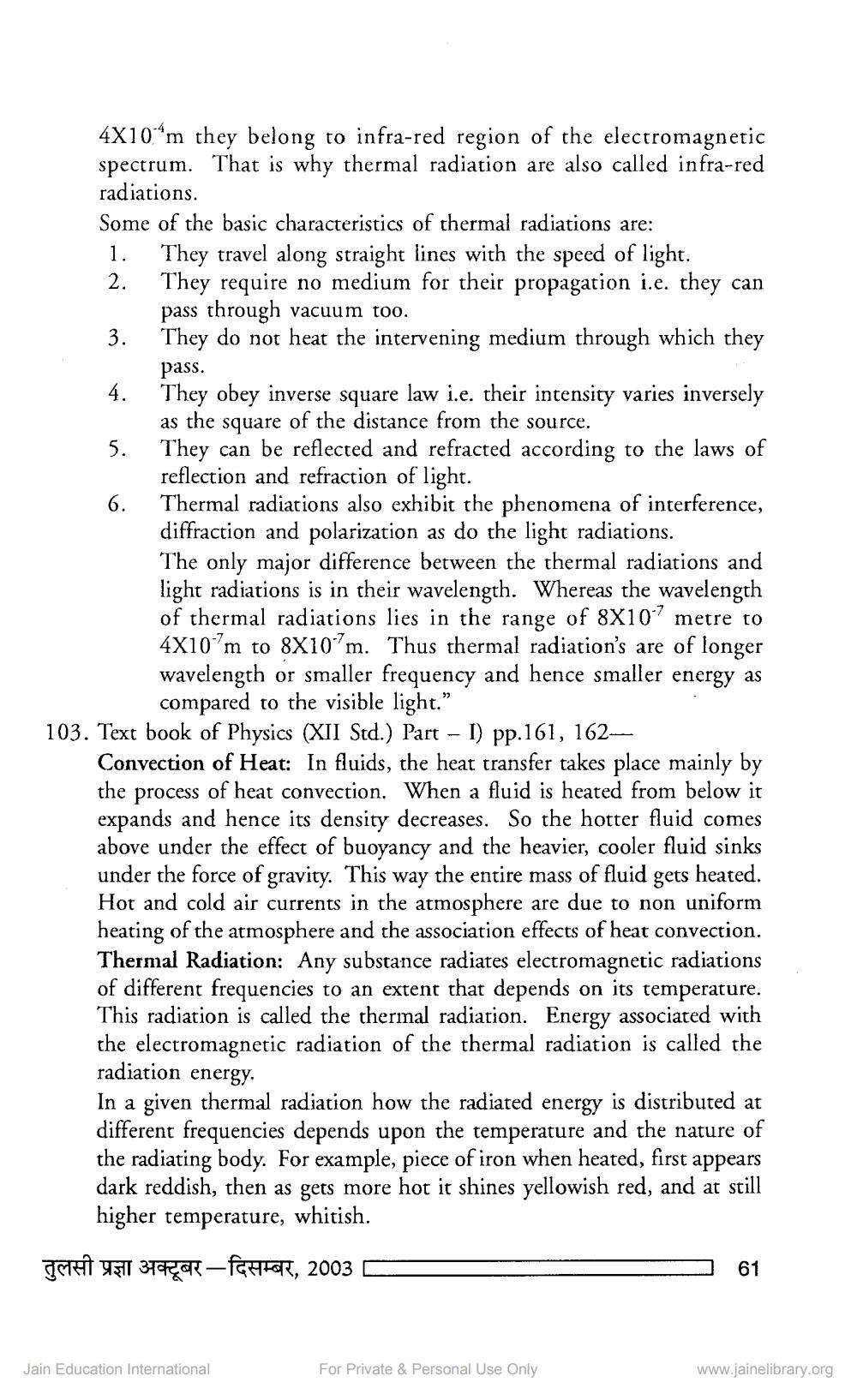________________
4X10 m they belong to infra-red region of the electromagnetic spectrum. That is why thermal radiation are also called infra-red radiations.
Some of the basic characteristics of thermal radiations are:
1.
2.
3.
4.
5.
6.
They travel along straight lines with the speed of light. They require no medium for their propagation i.e. they can pass through vacuum too.
They do not heat the intervening medium through which they pass.
They obey inverse square law i.e. their intensity varies inversely as the square of the distance from the source.
They can be reflected and refracted according to the laws of reflection and refraction of light.
Thermal radiations also exhibit the phenomena of interference, diffraction and polarization as do the light radiations. The only major difference between the thermal radiations and light radiations is in their wavelength. Whereas the wavelength of thermal radiations lies in the range of 8X10 metre to 4X10'm to 8X107m. Thus thermal radiation's are of longer wavelength or smaller frequency and hence smaller energy as compared to the visible light."
103. Text book of Physics (XII Std.) Part – I) pp.161, 162——
Convection of Heat: In fluids, the heat transfer takes place mainly by the process of heat convection. When a fluid is heated from below it expands and hence its density decreases. So the hotter fluid comes above under the effect of buoyancy and the heavier, cooler fluid sinks under the force of gravity. This way the entire mass of fluid gets heated. Hot and cold air currents in the atmosphere are due to non uniform heating of the atmosphere and the association effects of heat convection. Thermal Radiation: Any substance radiates electromagnetic radiations of different frequencies to an extent that depends on its temperature. This radiation is called the thermal radiation. Energy associated with the electromagnetic radiation of the thermal radiation is called the radiation energy.
In a given thermal radiation how the radiated energy is distributed at different frequencies depends upon the temperature and the nature of the radiating body. For example, piece of iron when heated, first: appears dark reddish, then as gets more hot it shines yellowish red, and at still higher temperature, whitish.
तुलसी प्रज्ञा अक्टूबर-दिसम्बर, 2003
Jain Education International
For Private & Personal Use Only
61
www.jainelibrary.org




